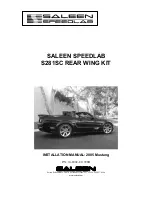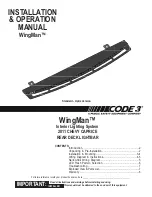
125
Starting and driving
Useful tips on starting the engine
If the engine has failed to start after several
attempts in very cold weather, proceed as
follows:
1 Turn the ignition switch to ON (it is
essential that you turn the ignition to
ON before depressing the accelerator).
2 Press the accelerator to the floor and run
the starter motor for 5-10 seconds. This
will prevent the engine being flooded
(fully depressed accelerator cuts off the
fuel supply).
3 Now start the engine in the normal way
- do not touch the accelerator.
If the engine stalls immediately after starting
(e.g. if the clutch was released too quickly),
do not touch the accelerator when restarting
the engine.
Important
considerations for
driving
1 Starting and driving
• Do not use full throttle until the engine
is warm, so as to avoid unnecessary
wear. If the needle of the turbo gauge
repeatedly enters the red zone, the
engine may suddenly lose power, due
to the initiation of a monitoring system
that limits the boost pressure. Contact
a Saab dealer as soon as possible.
• Under certain barometric conditions
(high outside temperature and/or high
altitude) the needle may enter the first
part of the red zone without necessarily
indicating that a fault has arisen.
• A protective function (interruption of the
fuel supply) limits the engine speed.
2 Stopping the engine
• Do not rev the engine immediately
before switching it off - stop the engine
when it is idling.
3 Regulating the charging pressure
• The system is optimized for AON 90.
One of the advantages of boost pres-
sure regulation is that the engine can
also be run safely on gasoline with a
lower octane rating, although not lower
than AON 87. Severe engine damage
will occur if gasoline lower than 87
octane is used. However, engine
performance will fall slightly and heavy
loading and laboring should be
avoided. For optimum performance,
use the recommended grade of fuel.
• The maximum boost pressure is regu-
lated according to the tendency of the
engine to knock. Short-lived knocking
is perfectly normal. This can occur
when the engine is running at about
3,000 rpm under a heavy load. The
extent of this knocking will depend on
the grade of fuel in the tank.
• Isolated instances of knocking can
occur with low-octane fuel. This
controlled form of knocking, followed
by a reduction in the boost pressure, is
a sign that the control system is work-
ing normally, and is perfectly safe for
the engine.
Содержание 2003 9-3 Remote Starter
Страница 96: ...96 Instruments and controls This page has been left blank ...
Страница 120: ...120 Interior equipment This page has been left blank ...
Страница 234: ...234 Maintenance and owner assistance ...
Страница 256: ...256 Notes ...
















































